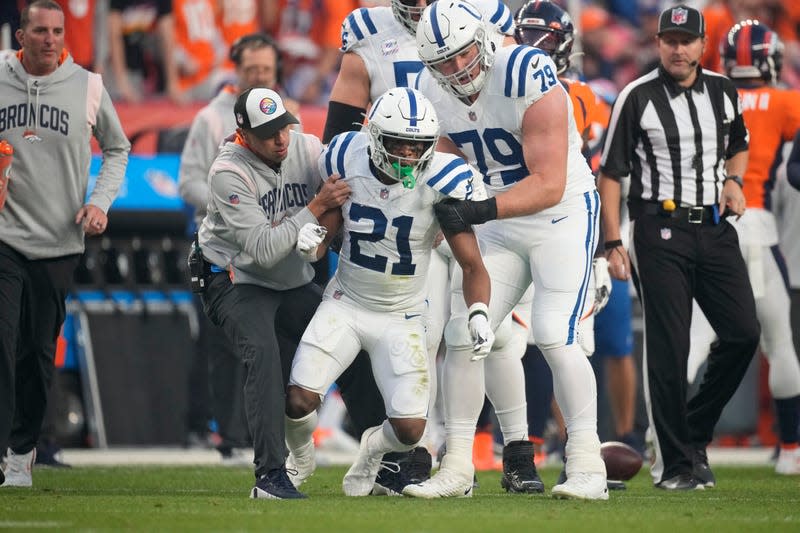Maybe It's Time to Rethink Thursday Night Football

- Oops!Something went wrong.Please try again later.
- Oops!Something went wrong.Please try again later.
- Oops!Something went wrong.Please try again later.
As a rule, the NFL’s Thursday Night Football games are awful. Players are generally lethargic after playing just four days earlier in their usual Sunday slots. Coaches, also lacking the typical prep time, haven’t had enough bandwidth to install more than generic offensive or defensive schemes. What typically follows is what we got in last night’s 12-9 snoozer between the Indianpolis Colts and the Denver Broncos, where the most interesting part of the action came on the third play of the game.
That’s when Colts running back Nyhiem Hines was the victim of a scary blow to the head reminiscent of a hit that sent Miami Dolphins QB Tua Tagovailoa to a trauma center just a week before in another Thursday Night Football game. As the Colts tried to warm up their anemic offense on the first series of the night, Hines caught a short pass from QB Matt Ryan, and then got sandwiched between two defenders trying to make a tackle.
Most fans have seen hits that look far more brutal, but brain injuries don’t care about a collision’s aesthetics. Seconds after hitting the turf, Hines tried, and failed, to stand on his own, wobbling as though his pro athlete legs could suddenly no longer support his own weight. Teammates and coaches helped him off the field and he was ruled out for the game’s remainder with a concussion.
Hines’ dizzy spell immediately brought to mind Tagovailoa’s recent spate of head injuries. In a Sunday game earlier this month, he staggered much like Hines did after hitting his head on the turf and had to be helped off by teammates and coaches. But unlike Hines, team officials allowed Tagovailoa to come back into that game, saying later said that he had suffered a back injury instead of a headshot. Four days later, Tagovailoa suffered a terrifying concussion in a Thursday night contest against the Cincinnati Bengals. The Dolphins wound up firing the independent neurologist who was involved in the decision to let him back into the first game.
Read more
As long as tackling is part of the game, concussions can’t be eliminated from American football. But here’s a thought: in a sport where debilitating violence is possible on every play, maybe Thursday night games—which by definition give players just four days of rest—shouldn’t be a thing. Some of the NFL’s scariest hits in recent years, from Ryan Shazier’s paralysis to Tagovailoa’s and Hines’ concussions, happened in Thursday night games.
That doesn’t mean playing on Thursday is inherently more dangerous than any other day of the week, but we do know that for athletes in ‘collision sports’ like football, rest and recovery are cousins of injury prevention. It’s why NFL players fought for years to avoid adding another preseason game or lengthening the regular season to avoid wear and tear on their bodies. (The NFL Players Association and the league eventually compromised by shortening the preseason to three games from four and adding a 17th regular season game last year).
Nobody would be mad if the NFL decided Thursday Night Games just weren’t worth it anymore. That is nobody besides the NFL itself and Amazon, which is paying the league $1 billion per season for the next decade to stream these snoozefests on its Prime Video platform. But since the NFL is only paying out about $1 billion in its settlement with the NFLPA over concussions to begin with, it looks like there’s about nine billion more reasons why that change won’t happen anytime soon.

